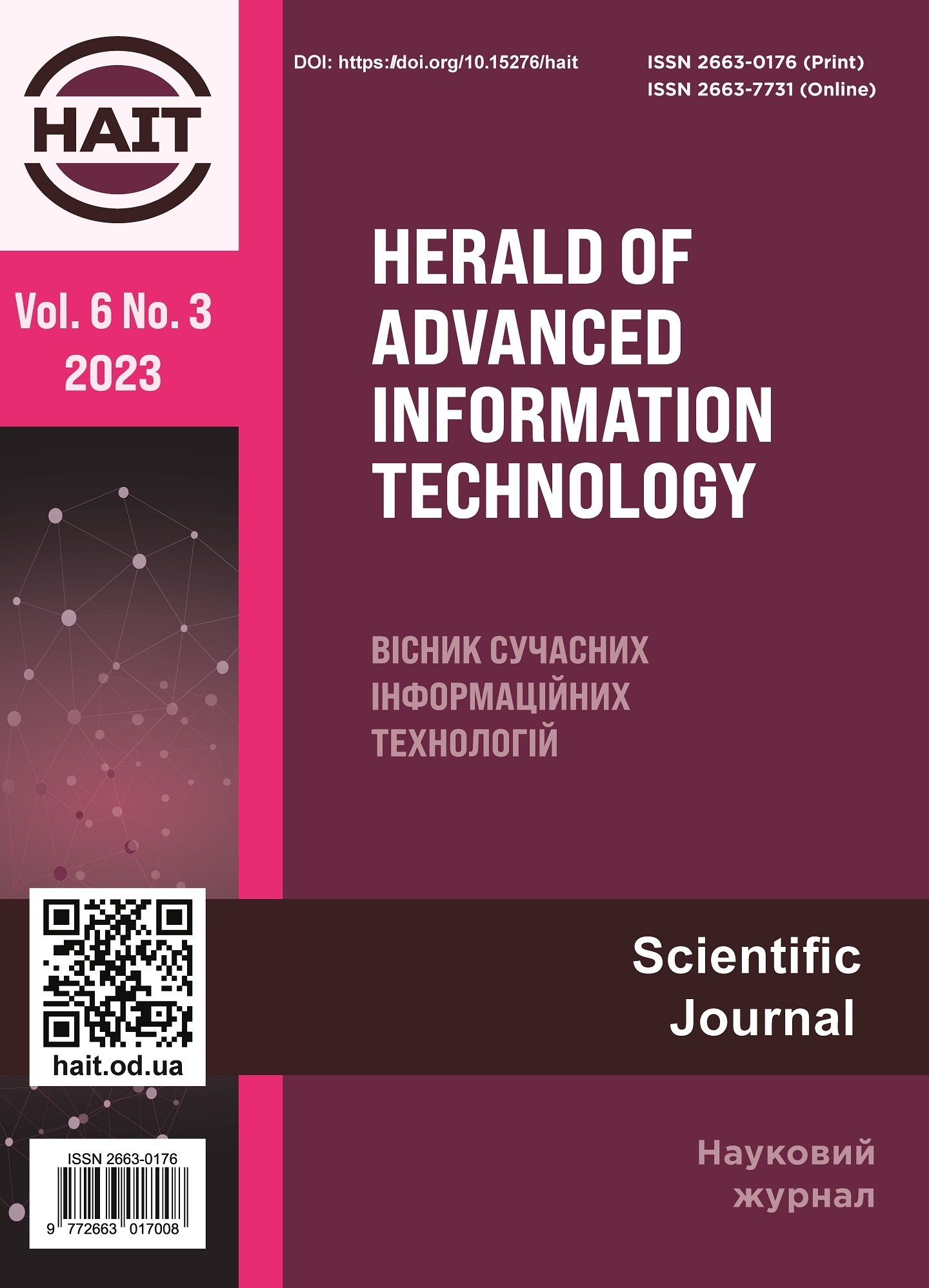Pseudo-labeling of transfer learning convolutional neural network data for human facial emotion recognition
DOI:
https://doi.org/10.15276/hait.06.2023.13Keywords:
pseudo-labeling data, semi-supervised learning, transfer learning, convolution neural networks, facial emotion recognitionAbstract
The relevance of solving the problem of facial emotion recognition on human images in the creation of modern intelligent systems of computer vision and human-machine interaction, online learning and emotional marketing, health care and forensics, machine graphics and game intelligence is shown. Successful examples of technological solutions to the problem of facial emotion recognition using transfer learning of deep convolutional neural networks are shown. But the use of such popular datasets as DISFA, CelebA, AffectNet, for deep learning of convolutional neural networks does not give good results in terms of the accuracy of emotion recognition, because almost all training sets have fundamental flaws related to errors in their creation, such as the lack of data of a certain class, imbalance of classes, subjectivity and ambiguity of labeling, insufficient amount of data for deep learning, etc. It is proposed to overcome the noted shortcomings of popular datasets for emotion recognition by adding to the training sample additional pseudo-labeled images with human emotions, on which recognition occurs with high accuracy. The aim of the research is to increase the accuracy of facial emotion recognition on the image of a human by developing a pseudo-labeling method for transfer learning of a deep neural network. To achieve the aim, the following tasks were solved: a convolutional neural network model, previously trained on the ImageNet set using the transfer learning method, was adjusted on the RAF-DB data set to solve emotion recognition tasks; a pseudo-labeling method of the RAF−DB set data was developed for semi-supervised learning of a convolutional neural network model for the task of facial emotion recognition; the accuracy of facial emotion recognition was analyzed based on the developed convolutional neural network model and the method of pseudo-labeling of RAF-DB set data for its correction. It is shown that the use of the developed method of pseudo-labeling data and transfer learning of the MobileNet V1 convolutional neural network model allowed to increase the accuracy of facial emotion recognition on the images of the RAF-DB dataset by 2 percent (from 76 to 78 %) according to the F1 estimate. At the same time, taking into account the significant imbalance of the classes, for the 7 main emotions in the training set, we have a significant increase in the accuracy of recognizing a few representatives of such emotions as surprise (from 71 to 77 %), fearful (from 64 to 69%), sad (from 72 to 76 %), angry with (from 64 to 74 %), neutral (from 66 to 71 %). The accuracy of recognizing the emotion of happy, which is the most common, decreased (from 91 to 86 %) Thus, it can be concluded that the use of the developed pseudo-labeling method gives good results in overcoming such shortcomings of datasets for deep learning of convolutional neural networks such as lack of data of a certain type, imbalance of classes, insufficient amount of data for deep learning, etc.








